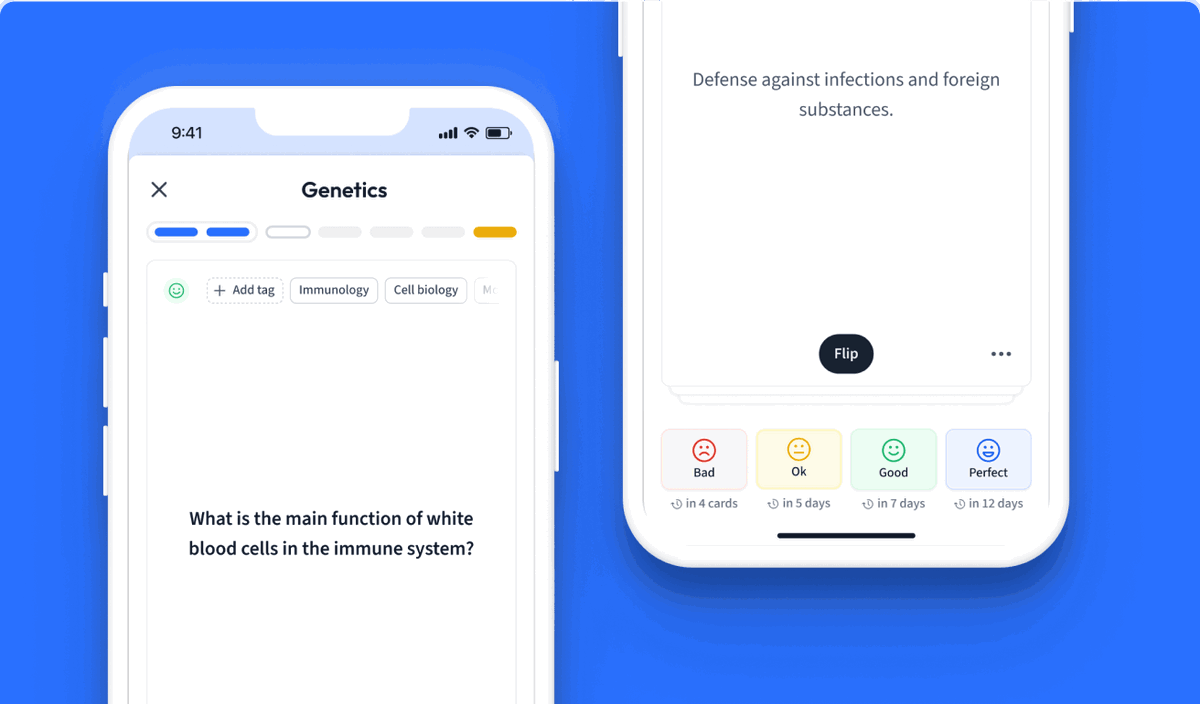Jump to a key chapter
Understanding Reactions of Monosaccharides in Organic Chemistry
Delving into the fundamentals of organic chemistry, an essential component that you will encounter extensively involves the reactions of monosaccharides. Essential biomolecules, monosaccharides offer great insight into the intriguing world of biochemistry and molecular biology.
Basic Overview of Reactions of Monosaccharides
Monosaccharides, often referred to as simple sugars , form the most basic units of carbohydrates. Understanding their reactivity illuminates a range of biochemical processes happening in living organisms, including cellular respiration and energy production. As a central point to note, monosaccharides can initiate several types of reactions due to their functional group variety and stereochemical diversity. They participate in reduction, oxidation, glycosidic formation, ring-closure, and the famous Maillard reaction. Additionally, reactions like chain extension and chain shortening, Merck-Wadsworth-Emmons Reaction, or Ferrier rearangements are also observed.
.Monosaccharides: These are simple sugars that constitute the building blocks of more complex type of carbohydrates. Each monosaccharide consists of carbon, hydrogen, and oxygen, and can exist in both linear and cyclic forms.
To delve deeper, it is the anomeric carbon of the cyclic form of monosaccharides that offers the potential for variety in chemical reactions. The orientation of its hydroxyl group gives rise to alpha and beta anomers, responsible for different physical properties and reactivities.
The Nature and Role of Monosaccharides in Organic Reactions
Considering monosaccharides are equipped with multiple hydroxyl groups and one carbonyl group, they are inclined to undergo a variety of chemical reactions. The carbonyl group, whether an aldehyde or a ketone, often acts as an electrophile, attracting nucleophiles. This allows organic reactions such as nucleophilic additions to occur. On the other hand, the hydroxyl groups can act as nucleophiles, enabling substitution or elimination reactions.
A classic example of how monosaccharides participate in organic reactions is their reduction to form sugar alcohols or polyols. This process involves the use of a reducing agent, which converts the monosaccharide's carbonyl group to an alcohol. For instance, when glucose, a common monosaccharide, is reduced using hydrogen and a catalyst, the reaction results in the formation of sorbitol, a sugar alcohol. Mathematically, this reduction can be represented by \( C_6H_{12}O_6 + H_2 \rightarrow C_6H_{14}O_6 \)
Similarly, oxidation reactions of monosaccharides also play prominent roles in cellular respiration and energy generation. Here, glucose (or other sugars) are oxidised to form carbon dioxide and water, while energy is produced.
Moreover, monosaccharides can also undergo intramolecular cyclisation, leading to the formation of hemiacetals or hemiketals. This phenomenon is crucial for monosaccharides' biological activity, as it leads to the formation of cyclic structures that are often more stable than their linear counterparts.
As a fine detail, Intramolecular reactions are highly favoured due to proximity effects. The cyclization process is a great example of this, displaying how intramolecular reactions can be faster and more selective compared to their intermolecular counterparts.
Primary Types of Chemical Reactions of Monosaccharides
Monosaccharides exhibit a myriad of fascinating chemical reactions, given the presence of several diverse functional groups. The inherent reactivity and applications of these reactions in various industry sectors and biological systems, accentuate the significance of understanding these reactions. There are three primary types of reactions that monosaccharides commonly undergo: condensation, oxidation, and reduction reactions.
Condensation Reaction of Monosaccharides
The condensation reaction, particularly prevalent amongst carbohydrates like monosaccharides, typically results in the formation of a larger molecule with the elimination of a small molecule. In the realm of biochemical processes, these are often driven by the release of a water molecule.
- Formation of Disaccharides:
- Formation of Polysaccharides:
- Esterification:
An example of a condensation reaction involving monosaccharides can be illustrated in the formation of disaccharides like sucrose, lactose or maltose. In the production of sucrose, glucose and fructose, the two monosaccharides, undergo a condensation reaction. This reaction results in the removal of a water molecule (H2O) and the formation of a glycosidic bond. Mathematically, this can be depicted as \( C_6H_{12}O_6 (glucose) + C_6H_{12}O_6 (fructose) \rightarrow C_{12}H_{22}O_{11} (sucrose) + H_2O (water) \).
Key Features and Implications of Condensation Reactions with Monosaccharides
Understanding the crucial features and implications of condensation reactions involving monosaccharides underscore their wide-ranging applications. A characteristic feature of these reactions is the formation of a glycosidic bond, linking two monosaccharide units. This is a covalent bond established between the anomeric carbon of one sugar and a hydroxyl group of another sugar. The formation of such bonds gives rise to various types of disaccharides and polysaccharides, expanding the structural diversity and functionality of carbohydrates.
Notably, during the condensation reaction, different types of glycosidic bonds can form based on the monosaccharides involved and the configuration of the glycosidic bond. For example, the bond formed in sucrose is an \(\alpha\)-1,2-glycosidic bond, while in lactose, it is a \(\beta\)-1,4-glycosidic bond.
Reduction Reactions of Monosaccharides
Reduction reactions of monosaccharides primarily involve the conversion of the carbonyl group (aldehyde or ketone) present in the monosaccharide to an alcohol group. This type of chemical reaction is commonly facilitated by a reducing agent, such as hydrogen in the presence of a catalyst like nickel. The product of this reduction process is a polyol or sugar alcohol.
Polyols: Also known as sugar alcohols, polyols are organic compounds, typically derived from sugars, that comprise multiple hydroxyl groups.
| Monosaccharide | Reducing Agent | Resultant Polyol |
| Glucose | Hydrogen | Sorbitol |
| Fructose | Hydrogen | Mannitol |
The Process and Result of Reduction Reactions with Monosaccharides
Reduction reactions of monosaccharides ensue at the carbonyl group location, converting aldehydes or ketones to primary or secondary alcohols, respectively. In the context of glucose, the aldehyde functional group present gets reduced to an alcohol, resulting in a sugar alcohol named sorbitol. The ultimate product is a polyol which can serve various applications.
Different polyols offer various benefits, such as lower calorific value, less tooth decaying potential, and lower blood glucose impact. As such, these compounds often find use as sugar replacements in dietary and diabetic foods.A simple yet informative reaction example of monosaccharide reduction can be seen in the transformation of glucose to sorbitol, which takes place through the following reaction \( C_6H_{12}O_6 (glucose) + H_2 \rightarrow C_6H_{14}O_6 (sorbitol) \). Here, glucose undergoes reduction in the presence of hydrogen to generate sorbitol.
Along with these, monosaccharides can also participate in a multitude of other reactions, each serving a unique and critical function. An appreciation of these intricate chemical reactions paves the way towards a deeper understanding of life's complex chemistry.
Detailed Analysis on Reactions of Monosaccharides with Phenylhydrazine
Encountered in a myriad of organic reaction discussions, the interaction of monosaccharides with phenylhydrazine is a subject of paramount import. Highlighting this special class of reactions enables a deeper understanding of the structure and behaviour of carbohydrates. Specifically, these reactions unveil valuable insights about the configuration of monosaccharides and their subsequent classification.
Studying the 8 Reactions of Monosaccharides
The wide range of monosaccharide reactions attests to their functional chemical versatility. As understanding the kinds of reactions is fundamental to grasping the structure and behaviour of these molecules, it's crucial to comprehend the eight primary types of monosaccharide reactions. From simple reduction or oxidation to complex glycoside formation and osazone formation, each reaction type offers a unique insight into the chemical nature and stability of monosaccharides.
Phenylhydrazine: Phenylhydrazine is an organic compound, primarily used in the laboratory for the characterisation of carbohydrates, such as monosaccharides. It reacts with sugars to form osazones.
- Oxidation
- Reduction
- Hemiacetal and hemiketal formation
- Acetal and ketal formation
- Isomerisation
- Formation of glycosides
- Glycosylation
- Osazone formation
Oxidation reactions involve the conversion of the aldehyde functional group in aldoses or the ketone group in ketoses to corresponding carboxylic acids. The reaction with phenylhydrazine is a prime example of this. It leads to the formation of osazone, which aids in identifications and derivatisations of sugars.
A lore to exemplify this, for instance with an aldohexose \( D-glucose \), can be written as follows: \( C_6H_{12}O_6 (glucose) + 3C_6H_5NHNH_2 (phenylhydrazine) \rightarrow C_{18}H_{21}N_3O_2(glucosazone) + 3H_2O (water) \). The reaction transforms glucose to glucosazone with the elimination of water molecules.
From the Simplest to the Most Complex: The 8 Fundamental Reactions
The eight elemental reactions among monosaccharides are listed from simplest to most complex, each with unique, distinguishable properties. Oxidation and reduction represent two of the simplest reactions, involving the addition or removal of hydrogen atoms to a molecule. Monosaccharides can be oxidized in the presence of a suitable oxidising agent. In contrast, reduction reactions encompass the conversion of the aldehyde or ketone functional groups into alcohol.
The reactions of hemiacetal and hemiketal formation and their acetal and ketal analogues mirror the characteristics of both aldehydes and alcohols found in sugar molecules. An intriguing characteristic of monosaccharides lies in their capacity to isomerise under specific conditions. Isomerisation reactions can convert aldoses to ketoses or vice versa and introduce epimerization.
As an educative illustration, you can consider the isomerisation of glucose to fructose, represented by the formula \( C_6H_{12}O_6 \rightleftharpoons C_6H_{12}O_6 \) Here, the reaction involves the interconversion of an aldose (glucose) and a ketose (fructose) under specific conditions. This transformative process is known as epimerization.
Furthermore, the ability of monosaccharides to form glycosides is apparent in a plethora of biological processes. Glycosidic bond formation enables the transition from mono or disaccharides to more complex carbohydrates like polysaccharides. Other reactions include glycosylation, where a sugar moiety is attached to a biomolecule, often a protein.
Lastly, osazone formation is another reaction evident in monosaccharides. The reaction involves interaction with phenylhydrazine, leading to the formation of an osazone derivative. This special reaction plays an indispensable role in delineating the structures of different monosaccharides. It allows for mapping out the orientation of hydroxyl groups on different carbon atoms.
Osazone formation exploits the reactivity of the carbonyl group found in reducing sugars. The reaction with phenylhydrazine leads to the derivation of a bis-phenylhydrazone referred to as osazone. The important point to underline is that osazones derived from different sugars often have distinct crystalline structures, which serve as analytical fingerprints in differentiating among them.
Exploring Bonding of two Reactions of Monosaccharides
In the dynamic domain of monosaccharide chemistry, the bonding reactions occupy a significant position. Monosaccharides, owing to the rich presence of hydroxyl groups, can engage in a variety of bonding reactions, presenting a fascinating facet of carbohydrate chemistry. In particular, two notable bonding reactions - glycosidic bond formation and ester bond formation, manifest frequently in biochemical pathways, contributing to the structural and functional diversity of carbohydrates.
Name and Characteristics of Bonding Reactions between Monosaccharides
Bonding reactions between monosaccharides produce specific classes of carbohydrates, each carrying unique features that account for their diverse physiological roles. Intriguingly, these reactions serve as critical steps in the biosynthesis of both structural and storage carbohydrates. Therefore, understanding the nature and characteristics of these bonding reactions is crucial in comprehending the intricate architecture of carbohydrates and their subsequent functionality. This section will delve specifically into two substantial bonding reactions - the formation of glycosidic bonds and ester bonds.
- Glycosidic bond formation: Glycosidic bonds offer the primary linkage between two monosaccharides. These covalent bonds occur between the anomeric carbon of one monosaccharide and a hydroxyl group of another. The creation of these bonds paves the way to synthesise disaccharides and polysaccharides.
- Ester bond formation: Ester bonds form when a hydroxyl group of a monosaccharide reacts with a carboxylic group of another molecule, creating an ester linkage. These bonds play a crucial role in the formation of sugar esters and sugar phosphates.
For instance, let us compare the reactions for the formation of a glycosidic bond versus an ester bond, using glucose as the monosaccharide:
| Type of Bond | Reacting Molecules | Reaction Formula (with Glucose) |
| Glycosidic | Glucose (two units) | \( C_6H_{12}O_6 + C_6H_{12}O_6 \rightarrow C_{12}H_{22}O_{11} + H_2O \) |
| Ester | Glucose & Acetic Acid | \( C_6H_{12}O_6 + CH_3COOH \rightarrow C_{8}H_{14}O_{6} + H_2O \) |
Implications and Practical Applications of Bonding Reactions
The implications and realistic applications of bonding reactions with monosaccharides are manifold. Spanning from the culinary world to pharmaceutical inventions, these reactions substantially contribute to multiple facets of human life.
Consider, for example, the saccharification process in beer brewing. It exploits the glycosidic bond formation reaction where starch, a polysaccharide, undergoes enzymatic hydrolysis to cleave the glycosidic bonds, yielding glucose units. This glucose then ferments, producing our desired alcoholic beverage.
Furthermore, the reaction of monosaccharides forming ester bonds with phosphoric acid results in sugar phosphates, primordial entities in energy metabolism. The phosphorylated sugars, like glucose-6-phosphate, function as critical intermediates in glycolysis, an essential biochemical pathway.
Glycolysis: Glycolysis is a ten-step enzymatic process responsible for converting glucose into pyruvate, generating a small amount of energy in the form of adenosine triphosphate (ATP).
Moreover, the esterification of monosaccharides is a fundamental step in the formation of nucleosides and nucleotides, integral to genetic material. In all living organisms, a nitrogenous base (adenine, guanine, thymine, cytosine, or uracil) forms an N-glycosidic bond with the anomeric carbon of a pentose sugar (ribose or 2-deoxyribose) to generate a nucleoside. The addition of one to three phosphate groups through ester bond formation to the nucleoside yields the definitive nucleotide building blocks of DNA and RNA.
In summation, bonding reactions between monosaccharides go beyond academic interest, having substantial real-world implications. These reactions underpin core biological processes, supporting the synthesis of critical biomolecules needed for life. Therefore, a deep comprehension of these bonding reactions between monosaccharides is fundamental to the broader understanding of biological chemistry.
Characteristics of Reactions of Monosaccharides
The heart of understanding the chemistry of monosaccharides lies in the extensive array of their reactions. The distinct properties of monosaccharides, such as \(\alpha\) and \(\beta\) anomerism and the existence of functional groups, significantly contribute to these chemical phenomena. In order to gain a vivid grasp of the diversity of monosaccharide reactions, one must first appreciate their cardinal traits.
Notable Traits in the Reactions of Monosaccharides
Monosaccharides, as elemental sugars, carry signature characteristics that pave the path for their unique reactions. Their innate structural elements, complemented by their potent reactive potential, orchestrate several chemical transformations. With this in mind, you can explore the distinctive features inherent in the reactions of monosaccharides.
- First and foremost, monosaccharides characteristically undergo reduction and oxidation reactions, associated with the aldehyde or ketone functional groups present in their structures.
- Secondly, these sugars have a proclivity for isomerisation, switching between different structural forms. Observably, monosaccharides can interconvert between their aldose and ketose forms, introducing variations within the D- and L- series of sugars.
- Another critical feature lies in their ability to form glycosidic bonds. The formation of these covalent bonds between two monosaccharides leads to the synthesis of higher order carbohydrates, such as disaccharides and polysaccharides.
- Monosaccharides also facilitate ester bond formation by reacting with carboxylic acids or its derivatives. These bonds result in the formation of sugar esters, and play a critical role in creating sugar phosphates, a key player in metabolic processes.
- Lastly, monosaccharides are uniquely capable of osazone formation, resulting from their interaction with phenylhydrazine. This reaction aids in the characterisation and differentiation of various sugars, thereby helping in analytical applications.
Osazone: Osazones are bis-phenylhydrazones formed during the reaction between a reducing sugar and phenylhydrazine. These crystalline derivatives present an effective means for the characterisation of reducing sugars.
Interpreting the Characteristic Reactions in a Practical Context
While the characteristic reactions of monosaccharides may initially seem constrained to the realm of academic theory, in reality, they fundamentally endorse a gamut of applied fields. Being components of essential physiological processes, the reactions of monosaccharides weave together a comprehensive understanding of various biological pathways.
One of the most commonly encountered carbohydrate reaction in life sciences is the formation of glycosidic bonds, facilitating the creation of di- and polysaccharides. For instance, the condensation of two glucose units via a \( \alpha-1,4 \) glycosidic bond leads to the formation of maltose, an essential sugar in brewing and bread-making industries. Moreover, cellulose, the structural carbohydrate found in plant cell walls, arises from the formation of \( \beta-1,4 \) glycosidic bonds between numerous glucose units.
Follow along as we detail the formation of a glycosidic bond between two glucose units. You start with two glucose molecules. Each glucose molecule's formula is \(C_6H_{12}O_6\). The reaction can be written as follows: \(C_6H_{12}O_6 + C_6H_{12}O_6 \rightarrow C_{12}H_{22}O_{11} + H_2O\). Note how this results in a disaccharide (maltose in this case) and a molecule of water.
Surely, the reactions of monosaccharides don't just end in the formation of bigger molecules. They also play instrumental roles within the metabolic processes of the body. As an excellent example, the intermediates in glycolysis, the Krebs cycle, and the pentose phosphate pathway are carbohydrate molecules that undergo a variety of transformations, including oxidation, reduction, isomerisation, and esterification.
A prime demonstration is the conversion of glucose to glucose-6-phosphate, a preliminary yet indispensable step in glycolysis. This reaction represents the ester bond formation, wherein the hydroxyl group at the 6th carbon atom of glucose reacts with phosphoric acid to produce glucose-6-phosphate.
To illustrate, the reaction between glucose and phosphoric acid can be represented as \( C_6H_{12}O_6 + H_3PO_4 \rightarrow C_6H_{11}O_6P + H_2O \). Note the water molecule again as a byproduct signifying completion of the esterification process.
In drawing conclusions, the reactions of monosaccharides, while deeply rooted in chemical theory, offer extensive practical implications. These reactions not only provide a astronomical view of carbohydrate chemistry but also decipher vital biological processes at the molecular level.
Reactions of Monosaccharides - Key takeaways
- Condensation Reaction of Monosaccharides: This type of reaction often leads to the formation of disaccharides like sucrose, lactose or maltose. Condensation reactions involve the removal of a water molecule and the formation of a glycosidic bond between two monosaccharide units.
- Reduction Reactions of Monosaccharides: These involve the conversion of the carbonyl group (aldehyde or ketone) present in the monosaccharide to an alcohol group. The end product is a polyol or sugar alcohol.
- Reactions of Monosaccharides with Phenylhydrazine: This category of reactions, crucial for understanding the structure and behaviour of carbohydrates, leads to the formation of osazones and helps in identifying and differentiating various sugars.
- 8 Reactions of Monosaccharides: These reactions range from simple reduction or oxidation to complex glycoside formation and osazone formation, each offering a unique insight into the chemical nature and stability of monosaccharides.
- Bonding of Two Reactions of Monosaccharides Name: The formation of glycosidic bonds and ester bonds is significant in the biosynthesis of both structural and storage carbohydrates, contributing to the structural and functional diversity of carbohydrates.
- Characteristic Reactions of Monosaccharides: They include glycosidic bond formation, ester bond formation, and other types of bonding reactions which carry unique features accounting for the diverse physiological roles of carbohydrates.


Learn with 15 Reactions of Monosaccharides flashcards in the free StudySmarter app
We have 14,000 flashcards about Dynamic Landscapes.
Already have an account? Log in
Frequently Asked Questions about Reactions of Monosaccharides


About StudySmarter
StudySmarter is a globally recognized educational technology company, offering a holistic learning platform designed for students of all ages and educational levels. Our platform provides learning support for a wide range of subjects, including STEM, Social Sciences, and Languages and also helps students to successfully master various tests and exams worldwide, such as GCSE, A Level, SAT, ACT, Abitur, and more. We offer an extensive library of learning materials, including interactive flashcards, comprehensive textbook solutions, and detailed explanations. The cutting-edge technology and tools we provide help students create their own learning materials. StudySmarter’s content is not only expert-verified but also regularly updated to ensure accuracy and relevance.
Learn more

